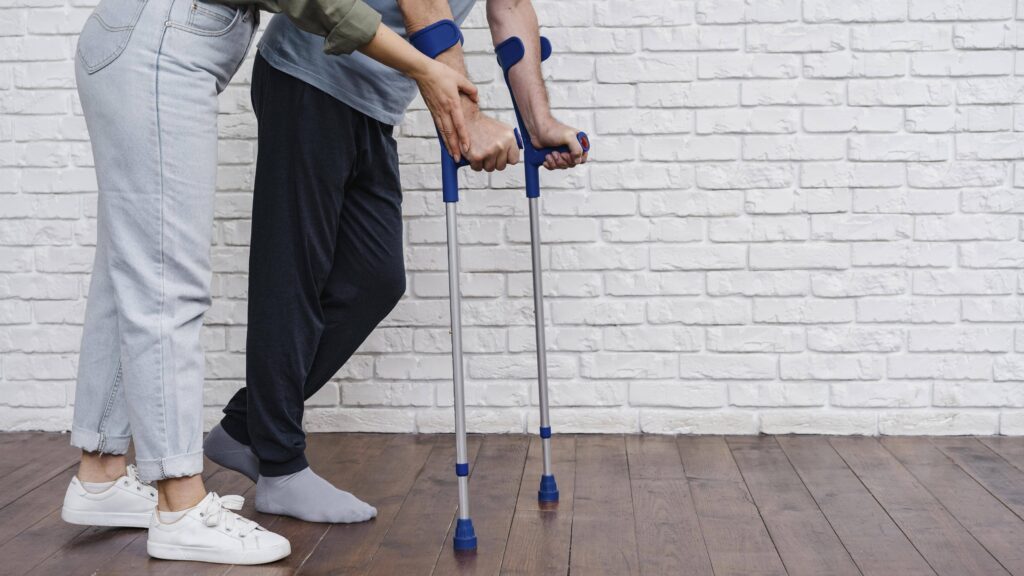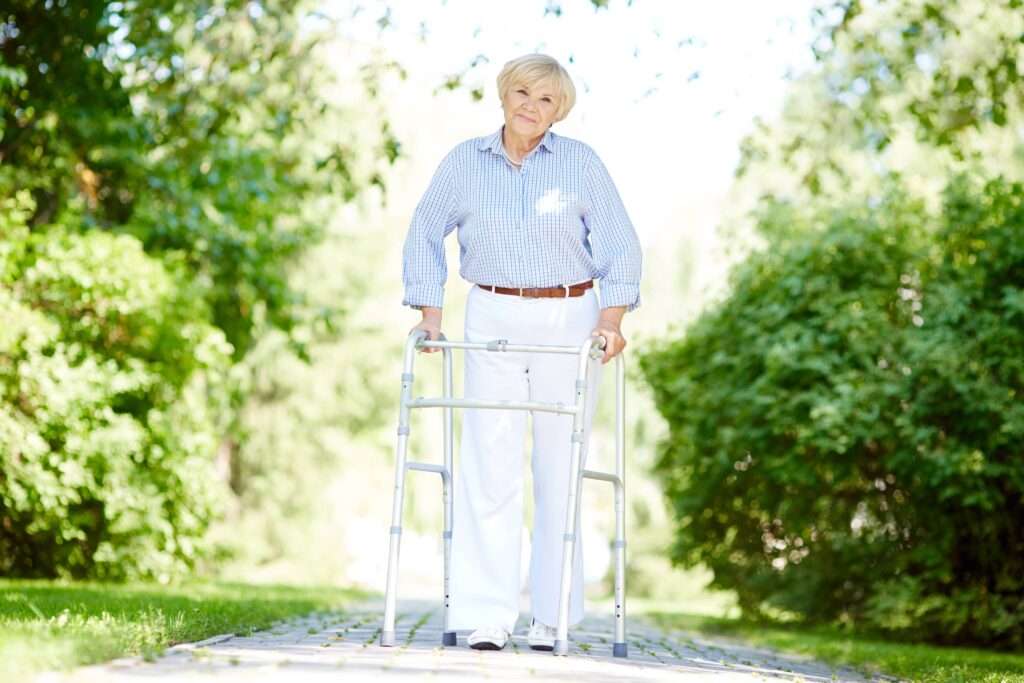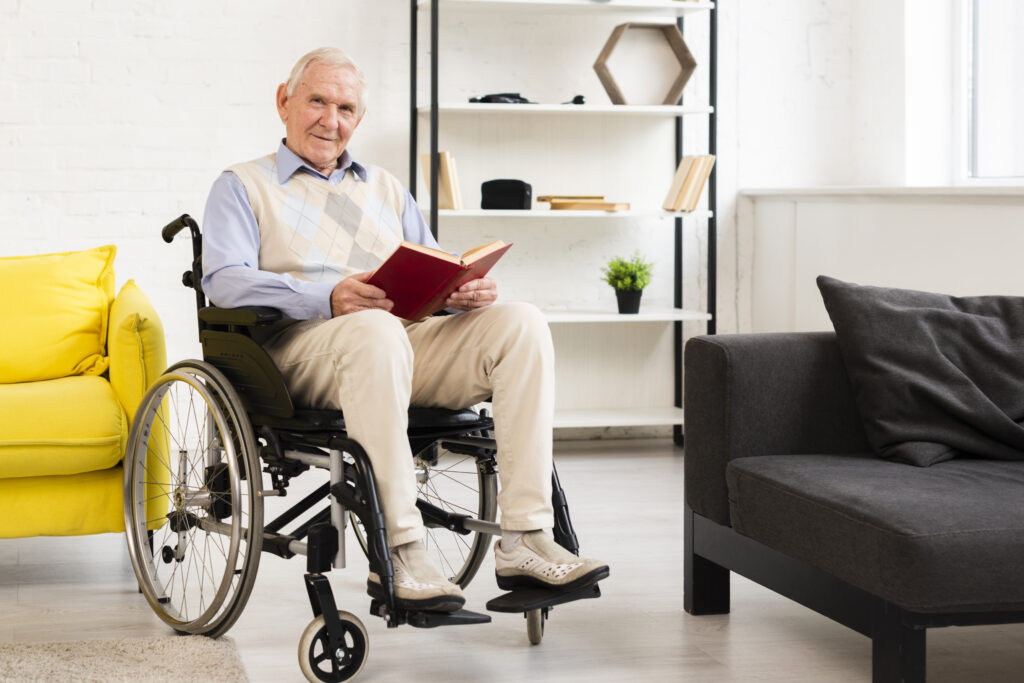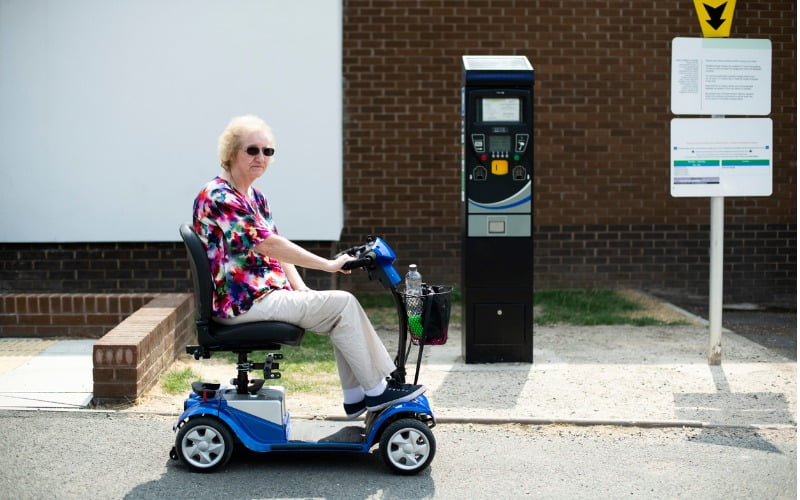
Mobility aids are vital for the elderly after reaching a certain age, and due to health conditions, they are a must-have. Mobility devices not only make life easier but also reduce the chance of falls and injuries. Choosing the right mobility aid for the elderly can greatly enhance their independence and quality of life. This post contains 5 must-have mobility aids for the elderly.
There is a wide array of mobility aids available for the elderly, such as canes, crutches, walkers, rollators, and mobility scooters.
We have listed 5 must-have mobility aids for the Elderly below:
1. Canes

Canes are one of the most commonly used mobility aids by the elderly. Cannes can provide support and balance while walking. Individuals who need minimal support or balance assistance can use Canes.
Canes are lightweight, easy to use, and provide basic support for those with mild balance issues. They come in various styles, including single-point canes and quad canes (which have a broader base for extra stability).
There are different types of canes available in the market that cater to individuals’ needs. They come in different designs and materials. The common materials used in canes are aluminum, wood, and carbon fiber.
Things to be considered before purchasing Canes:
- Height of user
- Weight capacity
- Stability and Balance Needs
- Mobility Needs
- Environment of Use
- The flexibility of height adjustments
- Comfort and Ergonomic
2. Crutches

Crutches utilize arm-shoulder power to balance the weight. A single crutch can hold up to 80% of the weight, whereas two crutches can support 100% of the weight. Typically, there are two types of crutches: Underarm (axilla) crutches and Forearm crutches.
Underarm Crutches are more often used for short-term injuries and are commonly recommended for users who can only bear weight with one leg. They are lightweight and durable, mostly made of aluminum, and designed with height-adjustable handgrips and legs. However, they can be painful in the underarm area if used for a long time. Generally, they are less expensive than forearm crutches, making them accessible to many users.
Forearm crutches can be used by individuals with long-term injuries. They are more stable and comfortable than underarm crutches. Compared to underarm crutches, forearm crutches allow flexible movement, making them suitable for more active users. They provide good stability and support for users who need assistance with balance but still have good upper-body strength.
Things to be considered before purchasing Canes:
- Height of user
- Comfortable hand grips and padding under the armpits
- Lightweight
- Material inspection. Mostly, aluminum is preferred
3. Walking Frames and Rollators

Walking frames and rollers are designed to help people move around. They are comfortable to use and are a safer option. The elderly can use walking frames to walk around and do daily chores. The body is mostly made from aluminum, ensuring portability and being lightweight. Crutches and canes can be painful, so walking frames and rollators can be used in place of them.
Walking frames come with four-leg support and are typically used by the elderly or those recovering from injuries or surgeries. The basic walker has rubber-tipped legs that grip the floor, requiring the user to lift the frame slightly with each step. Some models of walking frames come with two wheels in the front leg. The non-wheeled versions require lifting; the user can control their walking pace easily.
Rollators have wheels, which is good for increased mobility but only ideal if the user already has a good balance. They can be used indoors and outdoors and offer comfort for individuals suffering from illnesses such as arthritis, including mid- and lower back pain. Many rollators include a built-in seat, providing a resting spot when the user needs a break.
Things to be considered before purchasing Walking Frames and Rollators:
- Consultation with health care professional is a must
- Wheel options
- Height adjustability
- Strength and Portability
- Grip and Brakes for rollators
- Storage option
4. Wheelchairs

Wheelchairs are another important mobility aid for the elderly. They ensure their safety and independence. Many varieties of wheelchairs are available in the market. The most common wheelchairs used are Aluminum and Steel Wheelchairs. The wide variety of wheelchair types and features ensures that there is a suitable option for every user’s specific needs and lifestyle.
Aluminum Wheelchairs are lightweight, portable, and durable, but they are more expensive than steel wheelchairs. Many aluminum wheelchairs come with adjustable seat heights and depths to accommodate different user sizes and preferences. They are also often adjustable and sometimes removable, enhancing comfort and ease of transfer. Aluminum wheelchairs can be easily transferred and maneuvered. Their aluminum bodies are rust-resistant and have a longer lifespan. Aluminum wheelchairs are commonly used by individuals having an active lifestyle.
Steel Wheelchairs are on the affordable side and can hold a heavier weight than aluminum ones. Steel wheelchairs are commonly used in hospitals and elderly care centers as they are durable and affordable. They are made from high-quality steel, which provides exceptional strength and durability. Typically, steel wheelchairs support higher weight capacities than aluminum wheelchairs, often accommodating users up to 300 pounds or more. But they are heavier than compared to aluminum wheelchairs.
If you are still confused about Aluminum Wheelchairs and Steel wheelchairs, please visit this blog post.
Things to be considered before purchasing Wheelchair:
- Weight of user
- Lifestyle of user
- Strength and Portability
- Comfort and adjustability option
- Durability and Maintenance
- Type of wheelchair
- Budget
5. Power Scooter

Power scooters are a popular mobility aid that enhances independence and mobility. These battery-operated devices are designed for seniors with limited mobility and feature a seat, backrest, handlebars, or a tiller, a platform for foot placement, and a battery-powered motor to propel the scooter.
Power scooters typically come with controls that allow users to adjust speed and direction, making them ideal for older adults and people who can’t walk long distances. They offer increased independence, stability, comfort, convenience, safety, and versatility, making them an excellent choice for seniors with limited upper body strength.
Things to be considered before purchasing Power Scooter:
- Battery life, maneuverability,
- weight capacity, and stability.
- specific mobility needs
- Consultation with a professional is a must
Conclusion: Before purchasing any mobility aid for the elderly, consult with a professional to avoid future injuries and accidents. You should also take into account elements like budget and insurance limitations, maneuverability and ease of transport, user education and assistance, comfort and suitability, safety and steadiness, and ecological factors.
Always purchase from a reputable brand and company to ensure investment in high-quality mobility aids and the possibility of getting the parts for future maintenance. Remember Water Orthopedics for high-quality mobility products: visit this link.

Nice Info! These devices provide support, improve stability, and enhance mobility, enabling individuals to navigate daily activities safely and independently, thus boosting confidence and overall quality of life.